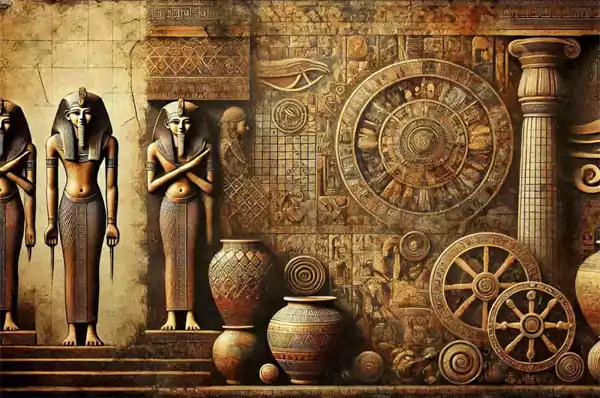
To know what ancient artz is one needs to step into a world where imagination has no bounds and creativity like Stars 923 takes center stage. Ancient Artz inspires people to explore the mysteries that have captivated humanity for centuries.
In simple terms, these are stuff (statues, paintings, decoration items, and more) made by people in the past, even when there is no way to write them down about them.
The mysteries surrounding ancient artz spark curiosity around the civilizations that birthed them.
What makes them mysterious? What is the purpose of ancient artz? and how artists choose their materials. This guide will answer all your questions. So stay tuned and go through this guy till the end.
Ancient Artz: A Journey Through Time
Asian artz is a testament to human creativity and expression. It spans over civilizations, continents, and centuries. Hence, showcasing the diverse ways people interpreted their environments.
As stated above, the practice of making ancient artz began when there was no proof of written languages. Here the question arises, how do people express their emotions, record an event, or communicate? Well, people in the past were creative enough to do all of them by creative means i.e.Ancient Artz.
Besides, art was not merely decoration; it served as a means of communication. For those who are wondering, how did they record events? Their rituals were depicted on stone walls, and sculptures immortalized deities and rules alike.
What Makes Ancient Art So Mysterious?
Ancient Artz arouses the imagination. Each piece of art holds a story that is often lost twice and obscured by history.
Symbolism makes it a trick as many artworks feature cryptic motives whose true meanings are still a topic of debate today.
In addition, the techniques used continue to reveal the mystery of how ancient artisans achieved such precision with what tools.
Last, but not least, the context in which the artwork was discovered, also adds another dimension of mystery. Their excavation from forgotten sites makes each artwork feel like a glimpse into another part of the world.
Early Beginnings and Purpose of Ancient Arts
Ancient art reveals a combination of techniques and materials that tell stories from the past. Artists sourced their pigments from natural elements and tools were just as varied.
Its origins date back to 40,000 years ago when early humans carved simple images on cave walls. This form of art was created by prehistoric humans.
Let us now walk through when we can find the first forms of ancient artz and what these artifacts were all about:
Rock Carving
In the past, humans carved images into stone to represent their surroundings or spiritual beliefs. It can be found in many parts of the world. For instance, the discovery of prehistoric deer carving hit the headlines in 2021.
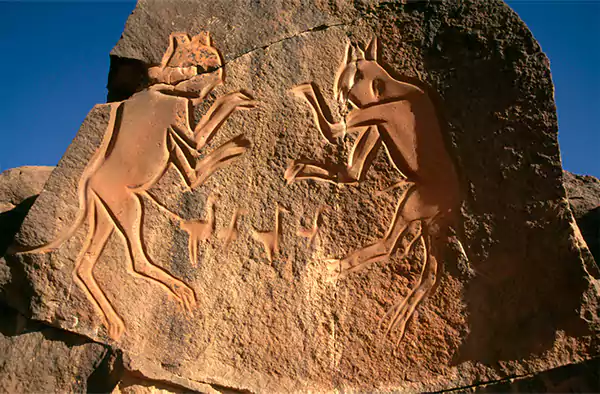
Cave Paintings
Cave paintings mainly depict animals, hunting scenes, and symbolic figures. Today, cave paintings can be found in places like Lascaux, France, etc.
For example, Chauvet–Pont d’Arc in South East, France is the greatest Paleolithic sanctuary ever discovered.
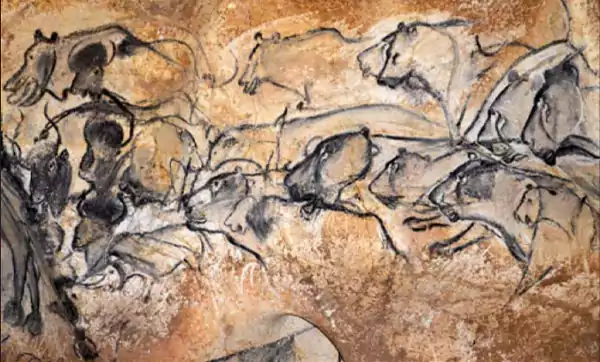
Sculptures
sculptures are the most powerful artifacts from ancient artz and were made from stone, bone, and wood. Majorly, it depicts the diaries or human figures.
One of the greatest examples of sculptures is ancient Buddhist sculptures present at an archaeological site in Juliyaan/Taxila, Pakistan.
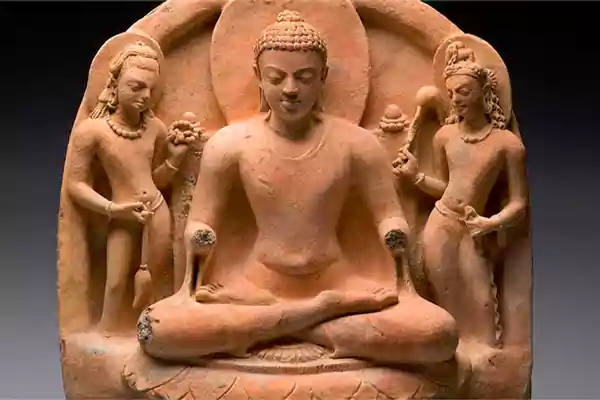
Now, let’s have an eye on the purpose of these ancient artz:
- Storytelling: Stuff was created to offer to God or as a part of religious ceremonies.
- Religious Rituals: As stated earlier, ancient artz were made to record events and stories so that these can be passed down through generations.
- Decoration: Artifacts were made for decoration purposes for both homes and public spaces.
A Closer Look at the Techniques and Materials Used in Ancient Art
Ancient art reveals a combination of techniques and materials that tell stories from the past. Artists sourced their pigments from natural elements and tools were just as varied.
Let’s look more closely at the techniques and materials used in ancient artz:
Paintings
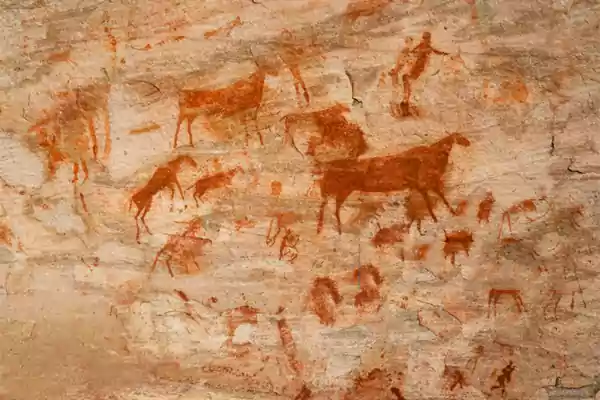
As you all know, painting is one of the oldest forms of art known to mankind. Ancient civilizations used paintings as a means of expression and these were created with techniques like:
- Fresco: It is the process of applying pigment on freshly laid lime plaster.
- Encaustic: For such paintings, artisans mix pigments with hot beeswax which is then applied on wooden panels or walls.
- Tempera: In tempera painting, pigments are mixed with egg yolk or other binding agents.
- Oil Paints: It involves mixing pigments with linseed oil to create vibrant and long-lasting colors.
As stated earlier, they use natural pigmentations. Those pigmentations were mainly derived from plants, minerals, and insects.
Stone Carvings
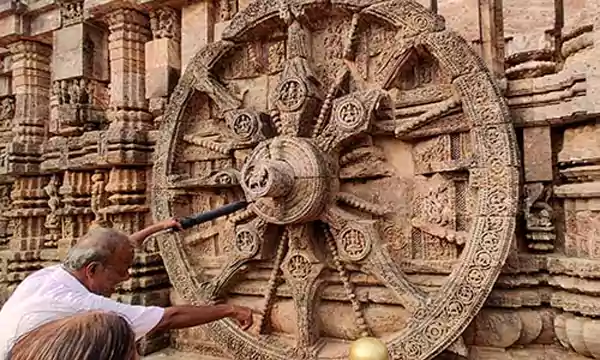
Stone carving is another common technique used in ancient art. It involves chiseling or carving designs on stones such as marble, granite, or limestone. This technique was used to create sculptures, inscriptions, reliefs, and architectural decorations.
The reason stone carving was popular is that it can withstand time. For instance, the carving on the walls of temples is a great example demonstrating how stone carvings can deal with challenging environments and atmospheres.
Metalwork
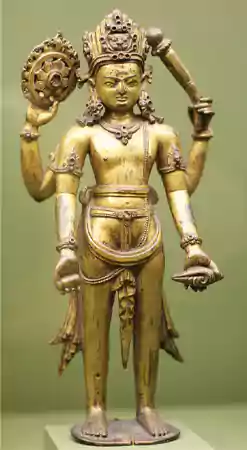
Metalwork is one of the highly valued techniques in ancient artz due to the rarity and preciousness of metals. In the past, the most common metals used for artifacts were gold, silver, bronze, and iron to create products like weapons, jewelry, and statues.
Moreover, this technique is used in processes like:
- Casting: Melting metal into a mold to create intricate designs or shapes.
- Hammering: Beating a piece of metal with a hammer to shape it into desired forms.Engraving
- Engraving: Carving designs or patterns onto metal surfaces using sharp tools.
Pottery
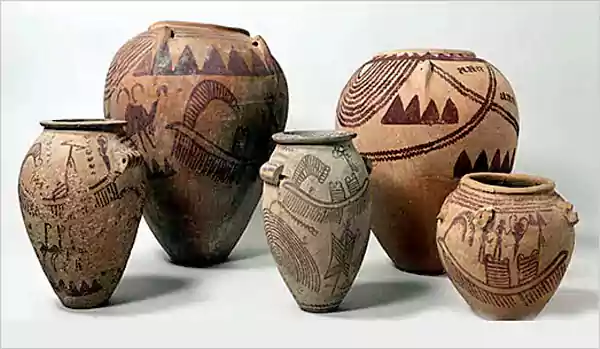
pottery was the earliest form of art in human history and has been found in almost every ancient civilization. Pottery was made to serve functional or artistic purposes and the technique used for it depends on the culture.
Most commonly, it involves shaping clay into vessels or objects that are then fired to harden them. In addition, many pots or vessels were then glazed with colorful designs.
Different Ancient Civilizations and Their Types of Ancient Artz
Ancient civilizations thrived across the globe and each of them leaves a distinctive mark through their art. In this section, we’ve explored different ancient civilizations and their types of artz:
Roman Art
Certainly, Greek art had a powerful influence on Roman practices. Although Roman ancient art was borrowed from the Greeks, they added their flair of practicality and grandeur. It encompasses a broad spectrum of media like marble, painting, mosaic, gems, silver, terracotta, and bronze work.
Some of the artifacts are as follows:
- Frescoes: It is an ancient mural painting technique, as said earlier. In Roman architecture, frescoes are not only decorative elements but also act as a practical solution for windowless and dimly lit interiors.
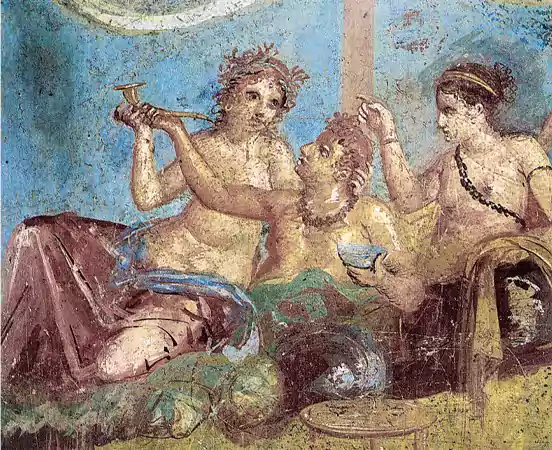
- Mosaics: Romans perfected mosaics as an art form and offered a vivid picture of ancient Roman life. The mosaics were full of drama and violence as they included action scenes, exotic creatures, violent hunts, and angsty mythological episodes.
The greatest example of Roman mosaic art is the Mosaic Floor with the Head of Medusa which was made in Italy.
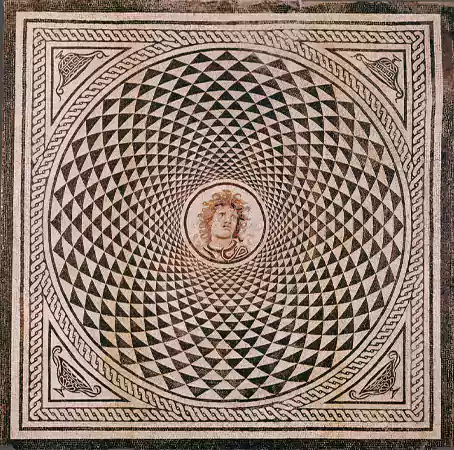
- Busts and Statues: Roman busts and statues are a sculpted portrait of the head and shoulders of a person (like emperors, generals, and popular citizens) from ancient Rome.
The greatest example is the portrait of Septimius Severus who was the famous Roman emperor from 193 to 211
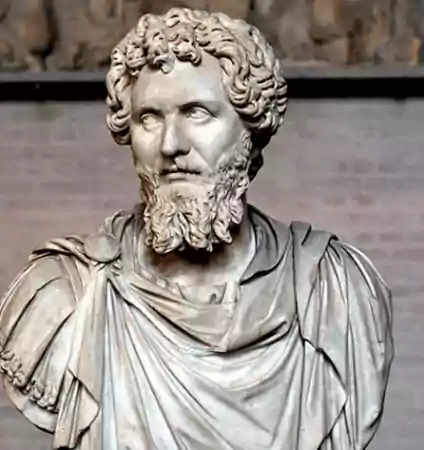
Greek Art
Greek art influences Western art. Greek art is widely known for its realistic and idealized depictions of the human body. Greek art includes a variety of art forms:
- Sculpture: represents mythical figures and idealized human form. One of the examples of Greek art is “The Discus Thrower statue”.
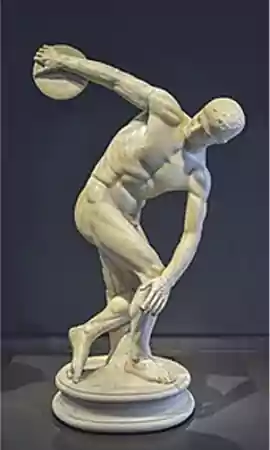
- Architecture: Greek architecture was known for its three main styles of temples i.e. Doric, Ionic, and Corinthian. The evident difference between them is their design of the capitals.
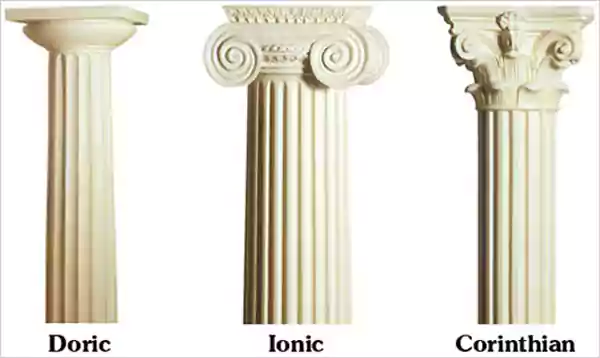
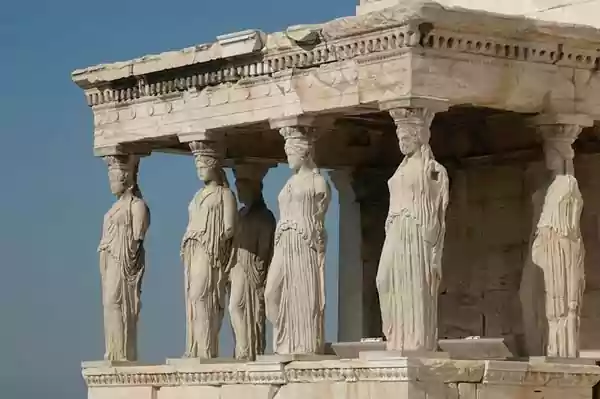
- Pottery: The Greek pottery was different from others as it is decorated with scenes from mythological and daily life. Examples include amphorae or two-handled vases.
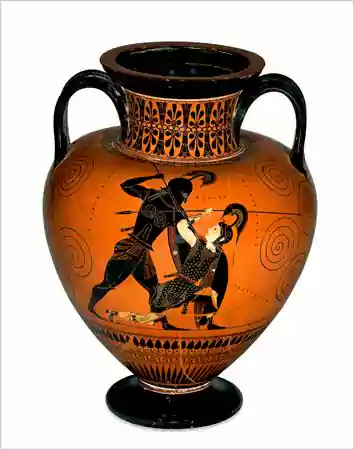
Egyptian Art
Egyptian art distinguishes itself from others with its bold lines, symbolism, and multi-layered intricate designs. Some of its famous types of ancient artz include:
- Hieroglyphics: Also called “the words of God” were a combination of art and writing, used to record events, honor their gods, and mainly used by priests.
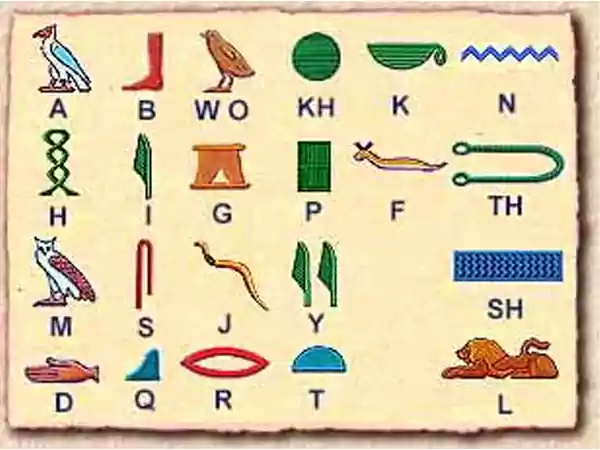
- Sculptures: Egyptian sculptures demonstrate powers and divinity. It includes., pharaohs, gods, and mythical creatures.
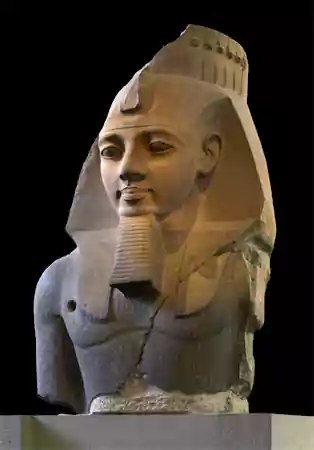
- Pyramids: These are ancient masonry structures beautified with art like paintings or carving. Pyramids in ancient times were made to tell the story of the afterlife. One of the most famous examples of pyramids is the Giza pyramid.
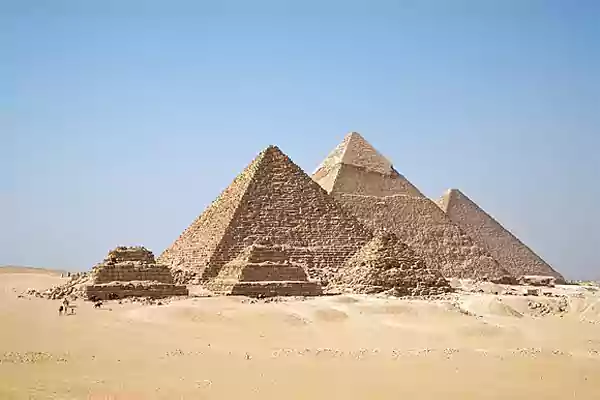
The Impact of Ancient Artz on Modern Society
Ancient Artz continues to resonate in modern society. And, it is seen that it is now shaping culture and creativity. For instance, the influence of ancient artz can be seen in contemporary art forms, architecture, and design.
Moreover, artists today are getting inspired by the techniques and symbolism of ancient creators. This connection is a dialogue between the past and the present. Consequently, enriching the understanding of human expressions.
In addition, museums offer insights into the values and beliefs of bygone civilizations as they exhibit ancient artifacts as bridges to history. However, enduring relevance represents how art is interwoven with cultural heritage and societal evolution.
Conclusion
To conclude this guide, we can say that ancient artz today is more than just a glimpse into the past. Instead, look at it as a bridge, connecting individuals to cultures that have shaped human history and culture.
Apart from its significance in history, ancient artz adds a reminder of the creativity and ingenuity of ancestors.
Therefore, embracing the beauty and wisdom found in ancient artz helps ground individuals in humanity and know the skilled hands across centuries.










